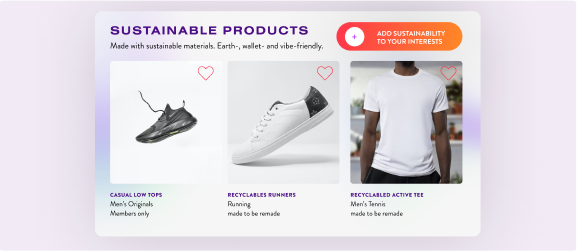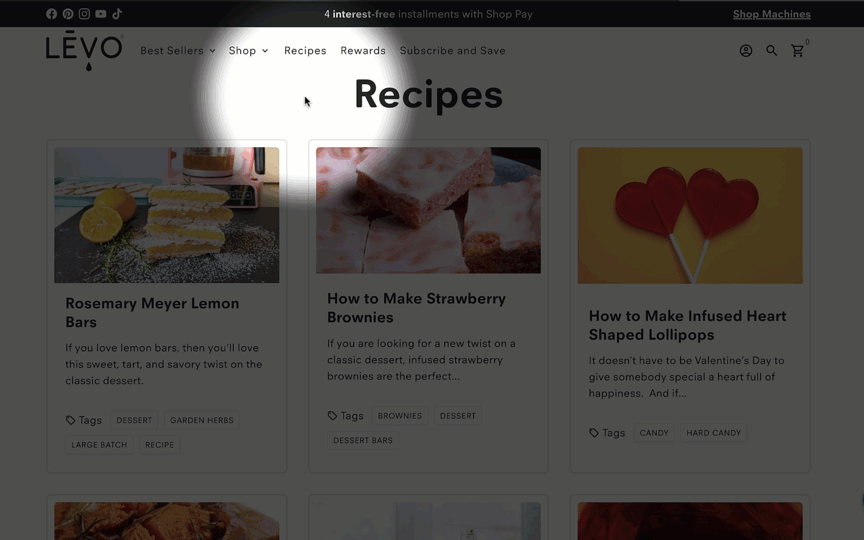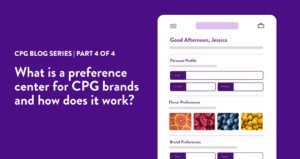With Wyng Contextual Preferences, collect information about your customers’ likes, needs, and interests in a user-friendly, frictionless way that doesn’t interrupt their browsing experience.
How it Works
Ever been happily browsing your favorite retailer’s site when your scroll is interrupted by a pesky pop-up? You groan at the prompt “Want to subscribe to our newsletter for updates about XYZ” and then quickly exit out of the pop-up to resume your browsing experience.
As a brand, you want to collect more data while getting customers to digest more content and discover more products. As as a customer, you want a brand to curate more personalized experiences for you, but no one likes their site experience to be interrupted by pesky pop-ups. Contextual preferences solves this very problem for both the brand and customer.
Contextual preferences are tiny code snippets that can be embedded in landing pages and emails so customers can easily indicate their likes, needs, and interests with a click of a button. The mechanism allows for collecting of preferences without any disruption to customers’ browsing patterns. You’re probably already familiar with some common uses of contextual preferences! For example, the Netflix thumbs up/thumbs down buttons. It’s almost second nature for us to rate a show right after watching it, and there’s 0 disruption to our binging experience to do so. In fact, most of us like to offer feedback via these buttons because we know Netflix will use the feedback to curate better recommendations for us in the future.
Contextual Preferences Inspiration
Contextual preferences are most commonly used on product detail, category, article, or blog pages. There’s a ton of examples out there, but here are a few of our favorites powered by Wyng:

Category or product detail pages
While browsing products on your site, allow customers to quickly indicate a preference for certain product attributes or styles – for example sustainable, organic, industrial, or pet-friendly. In this example, site visitors can “Add Sustainability to Your Interests”. In doing so, their profile is updated to include this preference and this information can be used across marketing channels to deliver more relevant experiences.
Article pages
Allow visitors to rate blogs or articles on your site. In this example, article preferences are immediately used in-session and cross-session to suggest additional articles that could be of interest.


Recipe pages
We love this example from LEVO Oil, which allows their customers to add recipe preferences to their customer profile. Customers can access and manage these preferences at any time (plus volunteer other preference data) via a gated customer preference center.
Ready to Get Started?
Contextual preferences allow your customers to quickly volunteer their affinity for certain products or content. This small experience can have a big impact on a brand’s data collection strategy and a customer’s digital experience. Contact us today to get a demo of our preference-based personalization and zero-party data capabilities.






